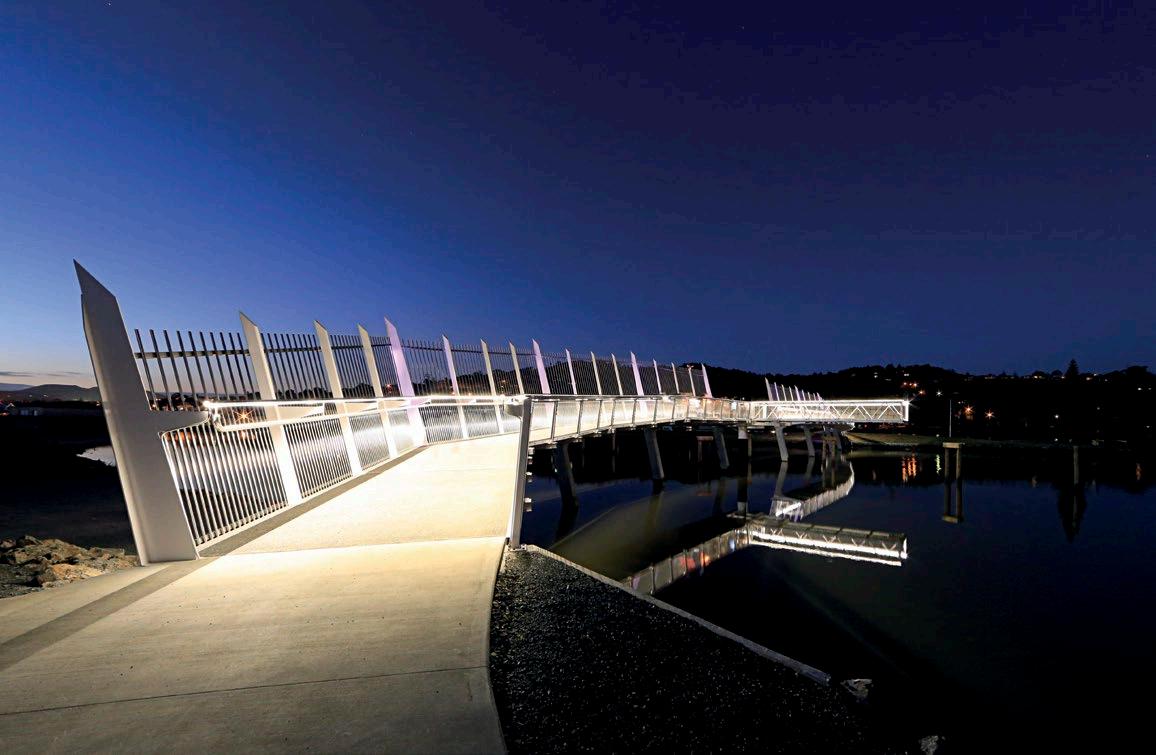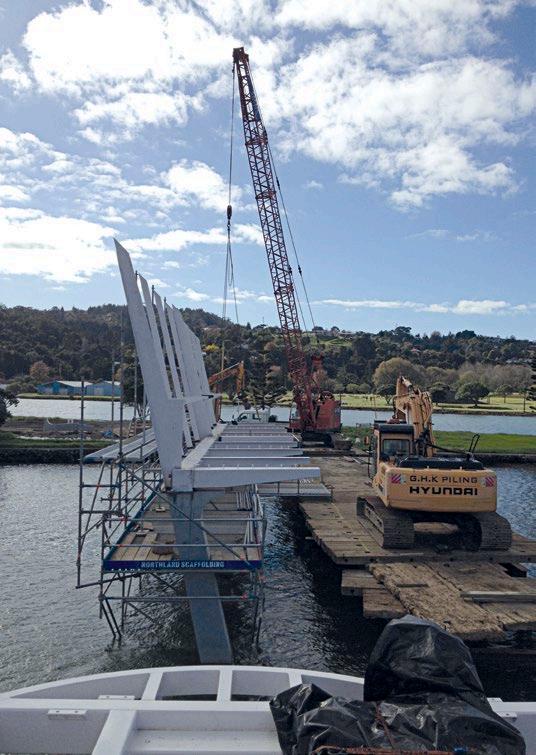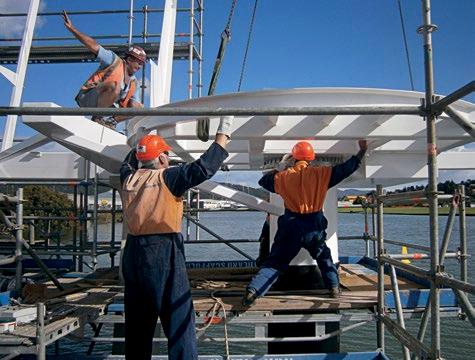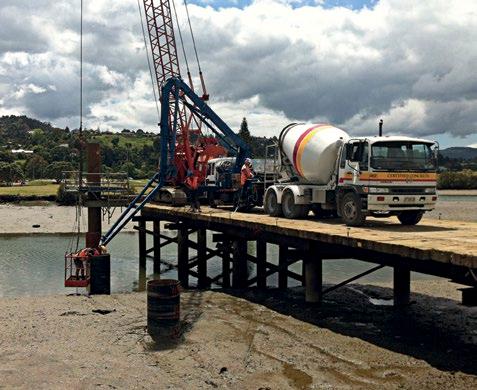
3 minute read
Steve Bowling Contracting
Far North footbridge
creates connection between town and peninsula
Advertisement
It’s fair to say that the estimated 1000 people a day who traverse Whangarei’s new Kotuitui Whitinga footbridge would be highly impressed by its striking design. But should they care to delve a little deeper it becomes clear that the engineering of this unique structure is also something to be admired.
2CONSTRUCTION EXCELLENCE AWARDS 2015 WINNER CATEGORY 2
PROJECT: Kotuitui Whitinga Footbridge, Whangarei CONTRACTOR: Steve Bowling Contracting O pened amid great fanfare in September 2014, the $1.83 million Kotuitui Whitinga footbridge crosses the Waiarohia Stream, linking the Hihiaua peninsula with Whangarei’s picturesque town basin.
Forming an important part of the town’s Hatea Loop walkway, it also reinforces a wonderful sense of place for the Whangarei community through metaphorical representations of ‘journey’, ‘light’, ‘movement’ and traditional Maori food gathering.
Local company Steve Bowling Contracting (SBC) won the tender for design and construction of the footbridge in January 2013. One of the unique aspects of the project was SBC’s 100 percent use of local consultants and contractors from the Whangarei district.
No less than nine local firms were used. Richardson Stevens Consulting Engineers, for example, did the structural engineering, with the architectural concept developed by HB Architecture.
As Steve Bowling says, “This [footbridge] was built by Northlanders, for Northlanders.”
At 100 metres long, the Kotuitui Whitinga footbridge has a 12-metre central opening section for boats to pass through. Ultra fast, the opening section takes only one minute to open



or close. With a width of 2.5 metres there’s ample room on the S-shaped footbridge. Graded for maximum comfort, it even features two special ‘withdrawal’ spaces for people to pause and take in the spectacular views.
As with all projects of this size success was, ultimately, in the planning. Because the footbridge was constructed in a tidal marine environment particular attention was paid to reducing environmental impacts, with an environmental planner engaged and close involvement throughout from Northland Regional Council.
From an engineering perspective, temporary staging was needed at the outset to get the all-important piling work underway.
Staging was done first on the south side of the stream, then, once the first half of the bridge had been completed, from the north side. This was important because the channel had to remain open and clear for marine traffic throughout the project.
The positioning of the piles was critical as these were needed to fit the superstructure of the bridge together. The piles were sunk in a 25 to 35 metre layer of soft marine mud with a firm gravel lens at a depth of 10 metres. More than fit for purpose, they were dynamically tested to make sure the necessary bearing capacity was achieved.
Climate was a quirk dealt with stoically by SBC. Incredibly, during construction two storms caused floods which washed down a significant amount of debris from upstream. Fortunately, SBC had developed a design and construction methodology that saw a significant amount of construction done off site. This not only allowed much of the work to go ahead in a controlled workshop setting, it also reduced the environmental risk of the project.
The project has won plaudits from all corners, including the client (Whangarei District Council), stakeholders and the general public.
Mark Seakins from the council is not shy to sing the praises of Steve Bowling Contracting.
“We were very impressed with how they took the architect’s vision and turned this into reality on site. This required some challenging engineering and construction, particularly given that the bridge structure is curved both horizontally and vertically, which gave no room for error.
“The fact that the bridge came together without problems in a challenging marine environment was a credit to the construction team,” he says.
Other stakeholders included local hapu, who were involved in the project from start to finish.
Marine users, nearby businesses, Northland Regional Council and, of course, the general public were other important groups kept abreast of project progress. From all accounts, they’re more than pleased with the final result.
With feedback like that, and the obvious popularity of the footbridge among walkers, runners and cyclists, there’s no question that Kotuitui Whitinga has proven to be a significant attraction – one embraced by the people of Whangarei. l










